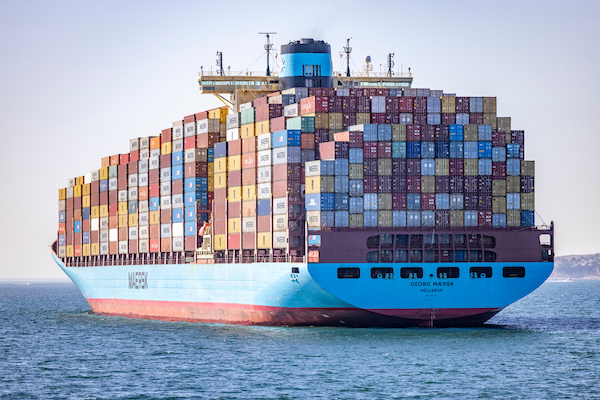Not unlike the pandemic itself, “persistent disruptions” to the supply chain are having an ongoing impact on the hotel business, going as far as to influence the timing of projects and, frankly, the decision to sell or hold assets, industry leaders say.
A late 2021 supply chain survey of American Hotel & Lodging Association members showed disruptions were impacting the operations of more than eight in ten hotels, and nearly three in four hotel operators say the disruptions are negatively impacting their business revenue. Fully, 86% of respondents reported that supply chain disruptions were having a moderate or significant impact on their operations. More than half (52%) said the problem had grown worse over the previous three months.
With no clear end in sight to sourcing, buying and receiving supplies, HOTELS reached out to purchasing experts to get their take on the situation and what the near-term future holds.
Over the course of this week, we will share insights from Carl Long, senior vice president, Purchasing Management International, Dallas, Texas; Chip McIntyre, senior vice president of Strategic Sourcing and Procurement, Avendra Group, Rockville, Maryland; Jerry Zeitner, COO, The Gettys Group Companies, Chicago; Chas Hyatt, vice president of acquisition and development and Erica Slaw, senior director of Capital Planning, Hersha Hospitality Trust, Philadelphia; as well as Shahid Javed, vice president and chief procurement officer for Aimbridge Hospitality, Plano, Texas.

Today, we ask the basic questions: what has been the impact of supply chain disruption and how long will it last?
HOTELS: What are supply chain disruptions are you experiencing and what is the impact on your business and your customers?
Carl Long: I recently heard the phrase ‘persistent disruption’ and thought it was such a good description of what has been happening to our industry over the past two years. The unpredictability of the market and the supply chain has made moving things forward very difficult. We have worked internally to keep our staff informed of changes across the marketplace from a client service standpoint and from a vendor performance standpoint.
We have clients that had projects go on hold and recover quickly and others who look like they are not going to recover. From a vendor performance and product delivery perspective, we have started digging into our vendors’ supply chain to get some clarity into how healthy their relationships are with their suppliers. It has borne fruit and helped us maintain project schedules and react to the persistent disruptions that have impacted all manufacturing and delivery.
We are telling our clients that they should plan for more time for their projects. At every stage of a project (sourcing, buying, manufacturing, delivering, installation) it is taking more time. The shipping delays compound production delays due to lack of raw material inventory or lack of consistent labor. We spoke with a manufacturer recently who has stopped accepting hospitality contract orders because his production lead times make him uncompetitive. His lead times are driven by his lack of consistently available labor.
Chip McIntyre: Our customers are experiencing similar challenges that others in the hospitality industry are experiencing. A benefit for our customers is that our sourcing team is working every day with manufacturers and distributors to mitigate the impact to our hotels’ operations.
For food, the impact is that manufacturers are making fewer products and having difficulty keeping up with demand. This means that hotels may find the need to substitute their normal items either temporarily or permanently.
For rooms products, the main challenge is that manufacturers are still trying to catch up with very high demand. The good news is that occupancies have been stronger than many expected, but the downside is that supply is very tight for many items, including textiles and amenities. The implication for customers is that they may have to buy substitute products, or their normal items may be on back order and they will have to wait to get the product they would like.
Jerry Zeitner: There is a lack of resources throughout the entire supply chain that has caused freight pricing and lead times to reach all-time highs. It goes all the way back to vendors/suppliers having trouble getting raw materials due to the lack of freight containers and trucking resources – once product is completed, these same constraints exist to get product moved to project sites. Additional constraints exist at Ports of Entry with limited resources available to bring product through customs.
We are seeing ‘typical’ leads times at 3x previous lead times for products and freight costs are about 250%-plus higher than traditional costs. This puts a huge strain on budgets and schedules for our clients as project budgets and schedules are typically done 18 to 24 months before we get to the shipping in a project.
Chas Hyatt: It is hard to comment on some items such as how long these issues continue as it’s a deeper macro/global conversation. We are simply adapting where we can, focusing on things that we can control and building in additional time (and maybe even a little extra!) for projects. All of this underscores the importance of managing expectations across stakeholders.

Erica Slaw: Like everyone, we’re experiencing longer timelines, higher raw material costs and higher transit costs. In some ways, the cost increases can be easier to manage than the delays. For example, we often work with our design partners on creative cost savings that allow us to reallocate budgeted funds to help offset high transit costs.
The current longer and unreliable timelines are tough. Many of the delays are, of course, coming from transit times and port congestion, but that’s only part of it. All phases of production are elongated. Getting quotes can take twice as long as it used to due to staffing shortages – sometimes a result of companies that downsized and haven’t fully rebuilt and sometimes the result of production facility shortages due to COVID protocols. Then, once we get through approvals and are in production, it’s not uncommon to get a call that a warehouse has been shut down indefinitely due to a COVID outbreak. When we add up pre-production delays, plus production delays, plus transportation delays, if we don’t have that time built into a schedule the impact on business is very challenging.
Shahid Javed: There is shortage of products and goods, along with related services and labor. Many factors have contributed to the shortage in the industry – raw materials as well as packaging, lack of qualified labor, and backlog in the ports to clear products imported from the Far East.
H: How long will this last?
Long: We anticipate that the effects of the supply chain shocks will continue into late 2022.
McIntyre: We aren’t able to put a precise date on the recovery because there are so many variables – namely labor at manufacturers and distributors, how soon transportation bottlenecks clear, and how strong occupancy is in 2022.
Broadly, though, we see food in pretty good shape now, albeit there will be some products that will need to be substituted and there is a great deal of inflationary pressure.
We expect rooms products (and other items imported) will stabilize in the spring and return to a more normal level (i.e., there is safety stock in the supply chain) during the summer. Rooms products also have inflationary pressure.
Zeitner: I don’t think we have clarity on how long it will last. I would expect to see a short term, small reprieve after the Chinese New Year as there will be less containers moving from Asia to the U.S. This will create an opportunity to return shipping containers to Asia and provide a little relief in pricing. I expect it to be short lived, however.
Slaw: We all wish we knew. For now, and the next two years of projects, we’re assuming cost increases and production/transit extended timelines aren’t improving.
Javed: Q3, 2022
